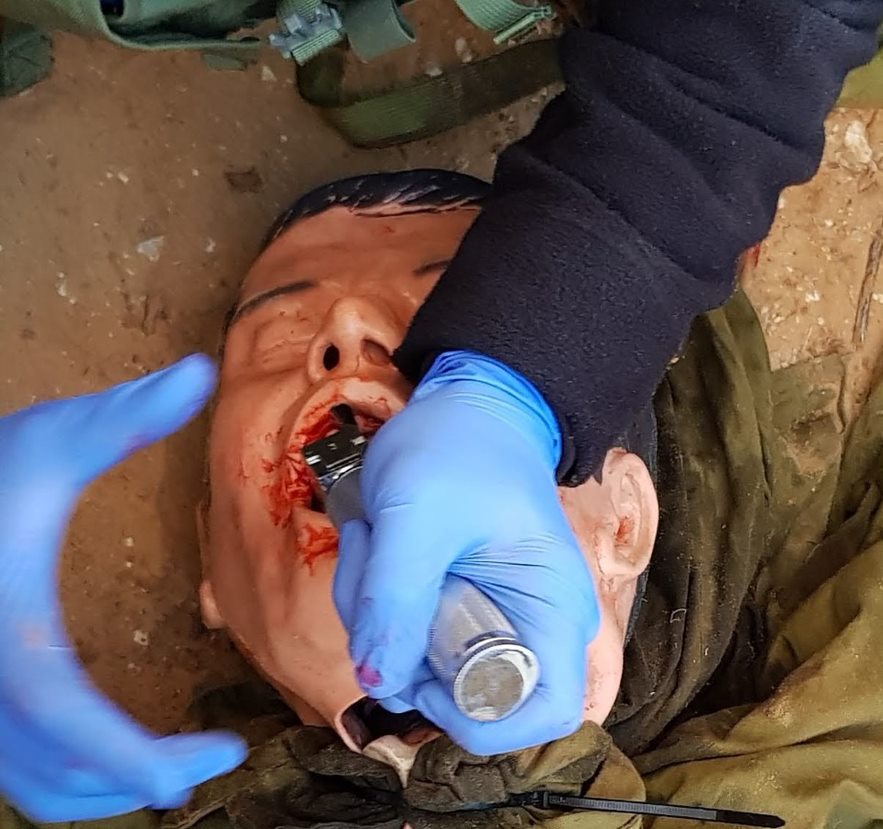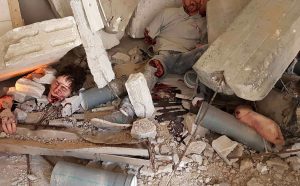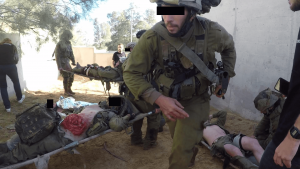Proper training techniques ensure that intubation training results in trainees possessing the proper skills for this procedure and can perform it successfully during a real-life situation.
[This article was translated from Hebrew from the Israel Medical Corps, and can be found at this link]
Challenges in intubation training: airway management
Airway management is one of the most important skills in treating the wounded on the battlefield.
Did you know…? Airway problems are one of the three leading causes of preventable death. The other two are bleeding and tension pneumothorax.
Decide who needs this intervention
The first and foremost challenge in airway management is selecting the wounded who need intervention.
- Out of 100 wounded in the battlefield, between 6 and 15 will die
- Of these, with proper and prompt treatment, about 25% can be saved
- Of these, only about 1-10% die as a result of a problem in the airway
Choose the correct type of intervention
This is the second of the challenges in intubation training.
Attention: Non-indication intubation reduces the chances of survival in shock injuries and exacerbates neurological damage in head injuries.
Injured people who present some problems with the airway can benefit from other less invasive operations that are more effective than intubation: the manual opening of the airway, oxygen administration, rapid evacuation with a surgeon who closely monitors the wounded (checking pulse, respiration, and blood pressure).
Making decisions on your own during a training session can prove lifesaving in a real-life situation. Learn about the elements to be included in a realistic extreme training.
Ensuring saviors are properly skilled for the procedure
The skill of the therapists is another significant challenge. Success rates for performing intubation in the field are lower than expected.
Hospital intubation training requirements in numbers: In order to maintain a sufficient level for intubation in a hospital, 50 intubations are required during training and another 20 each year.
Performing intubation in the field is even more complex.
Many doctors and paramedics in the field are mostly skilled on simulators. These trainers make it possible to correctly apply the order of operations required to perform the procedure. But the question arises as to whether most of these simulators simulate the expected airway in the injured person.
You may also be interested in reading about Disaster Recovery Principles, a valuable resource that discusses strategies for disaster management when rescue forces are hit.
How efficient are intubation training procedures?
To examine this question, a study from Austria compared CT scans of six familiar practice dolls to those of the wounded. In almost all the puppets the cavities were larger.
A similar study in the United States found that in three dedicated puppets out of 27 measurements, 17 measurements were more than one standard deviation from the mean in humans, and another eight were more than two standard deviations away. The distance from the tongue and epiglottis to the posterior pharynx in all puppets was above the 80th percentile in humans.
The conclusion is that intubation in practice dolls is easier than in the average person and this has a negative effect on the fitness of the therapists.
Disaster training should always be performed using realistic training mannequins. Click here to learn how the use of mannequins during trainings impacts their effectiveness directly.
Airway management, the top challenge in intubation training
Airway management is an important skill. The selection of the injured and the appropriate intervention play an important role in the benefit of the procedures.
Remember: the vast majority of the injured do NOT need airway intervention.
Practicing on Simulators is good for practicing the sequence of actions. But most existing simulators do not simulate human airways well. The airway in most practice dolls is too light and will cause an extra sense of security.
To develop a true intubation skill, care must be taken to perform qualifying days in hospitals.
Do you need to train a big team of rescuers? Learn about the top things to focus on when training multiple trainees.
Book an intubation training session now to properly deal with airway management
GET IN TOUCH
Contact Extreme Simulations now to book a complete training session





